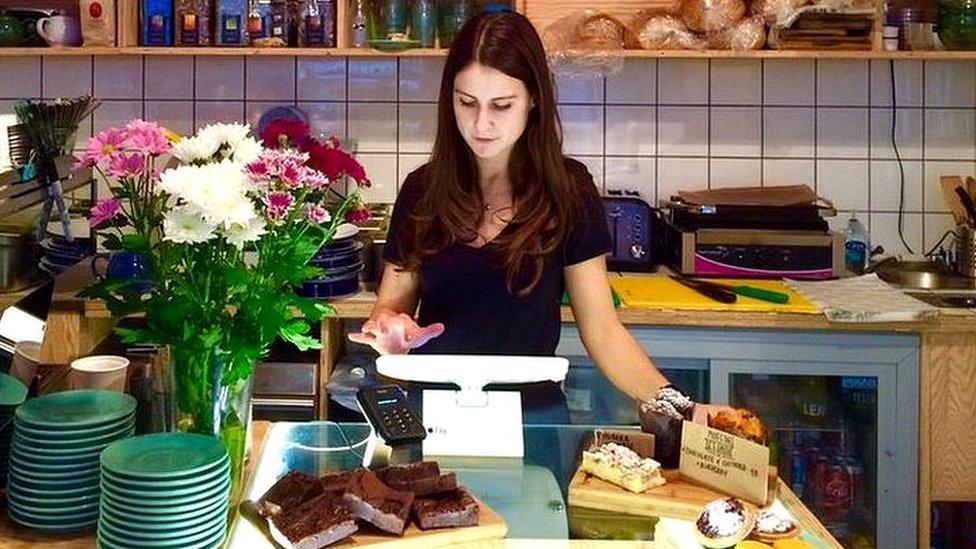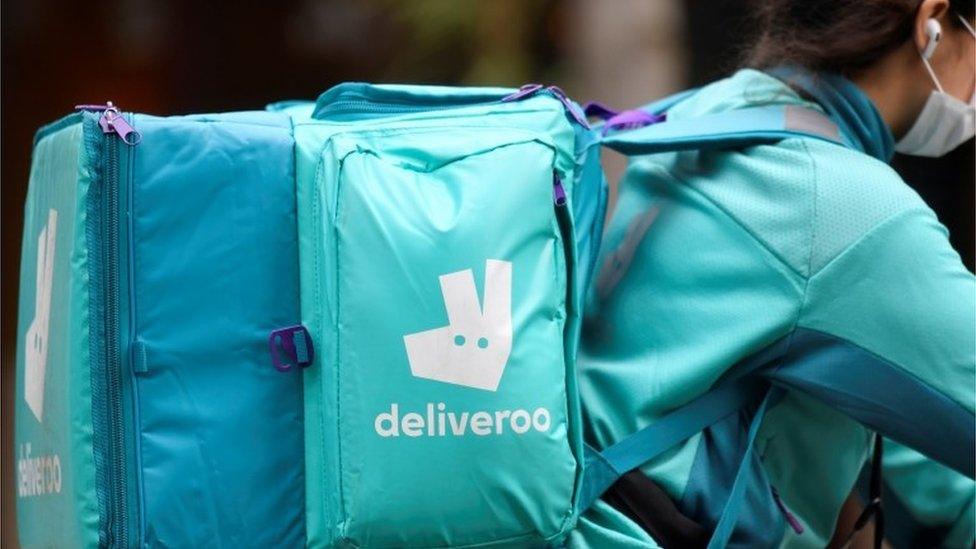Taste for takeaways outlasts Covid lockdowns
- Published
- comments

Cafe owner Carol Deeney says 50% of sales are now via delivery app
If any of Carol Deeney's customers fancy a bacon roll or a haggis toastie, they can pop down to her Scottish Street Food café in east London.
But she says half of them, these days, turn to delivery apps instead.
"We have loyal customers now that haven't even graced our doors," she says.
During lockdown there was surge in demand for takeaways and home deliveries as people discovered that, as well as the traditional pizza or curry, it was easy to have other favourite dishes delivered, from brunches to late night snacks.
Food outlets pivoted on the spot to keep up with these sudden new demands.
But perhaps more surprisingly, even as the chance to dine out has returned, demand for home deliveries and takeaways has continued to grow.
Nearly a quarter of people are spending more on takeaways and food deliveries now than before the pandemic, according to market research group Mintel.
Prior to Covid, Britons were spending around £38 per month each on takeaways, home deliveries and meal kits, according to accountancy firm KPMG, a trend that was already growing. But between spring 2020 and spring 2021 average monthly spend per person reached £53.
"The change that would have happened in three to five years in the sector has happened in months when businesses reacted as the pandemic started," Will Hawkley, KPMG's global head of leisure and hospitality.
It doesn't matter to Carol Deeney if some days her waiting staff are seeing more delivery riders than customers. She's accepted that consumer habits have changed, and she's planning to put more resources into the delivery part of the business.

Big fast food chains, including Burger King and McDonalds, also say they are expecting home delivery to expand.
"We believe the increased demand for delivery is a trend that is here to stay," Neil Manhas, general manager of Pizza Hut UK, said.
"Sales have been consistently higher than pre-lockdown and we're actively recruiting for delivery drivers and managers."
Pizza Hut is launching 125 new locations over the next three years to serve home delivery.
A spokesperson for Burger King said: "Increasing consumer demand towards digital services is showing no sign of slowing and therefore is an area we will continue to focus on."
But while the growth in home deliveries is an opportunity, restaurants are also wary of it.
Tension
For pan-Asian restaurant chain Tampopo, a third of its business is now takeaway or ordered via online platforms, according to the company's co-founder David Fox.
And while he's keen for that part of the business to keep growing, he says there can be a "tension" between providing for customers on-site and for those ordering online.

David Fox is co-founder of Tampopo and East Street restaurants
"We are, at our heart, a dine-in restaurant not a delivery restaurant," says Mr Fox.
"We'll always prioritise dine-in customers. In extreme circumstances, say we're two chefs down, we drop off the [online] platform."
He says delivery riders and dine-in customers will often find themselves sharing the same entrance or staircase in a restaurant, and that businesses now need to think about delivery and take-out when fitting new restaurants.
"Five years ago, you wouldn't really think about delivery," says Mr Fox. "Now, you'd be thinking: on a Saturday night, how many delivery orders would you be having, and where are you going to put them, and how can it be done in a way that it doesn't interfere with the customer flow and customer experience."
- Published11 August 2021

- Published20 July 2021
